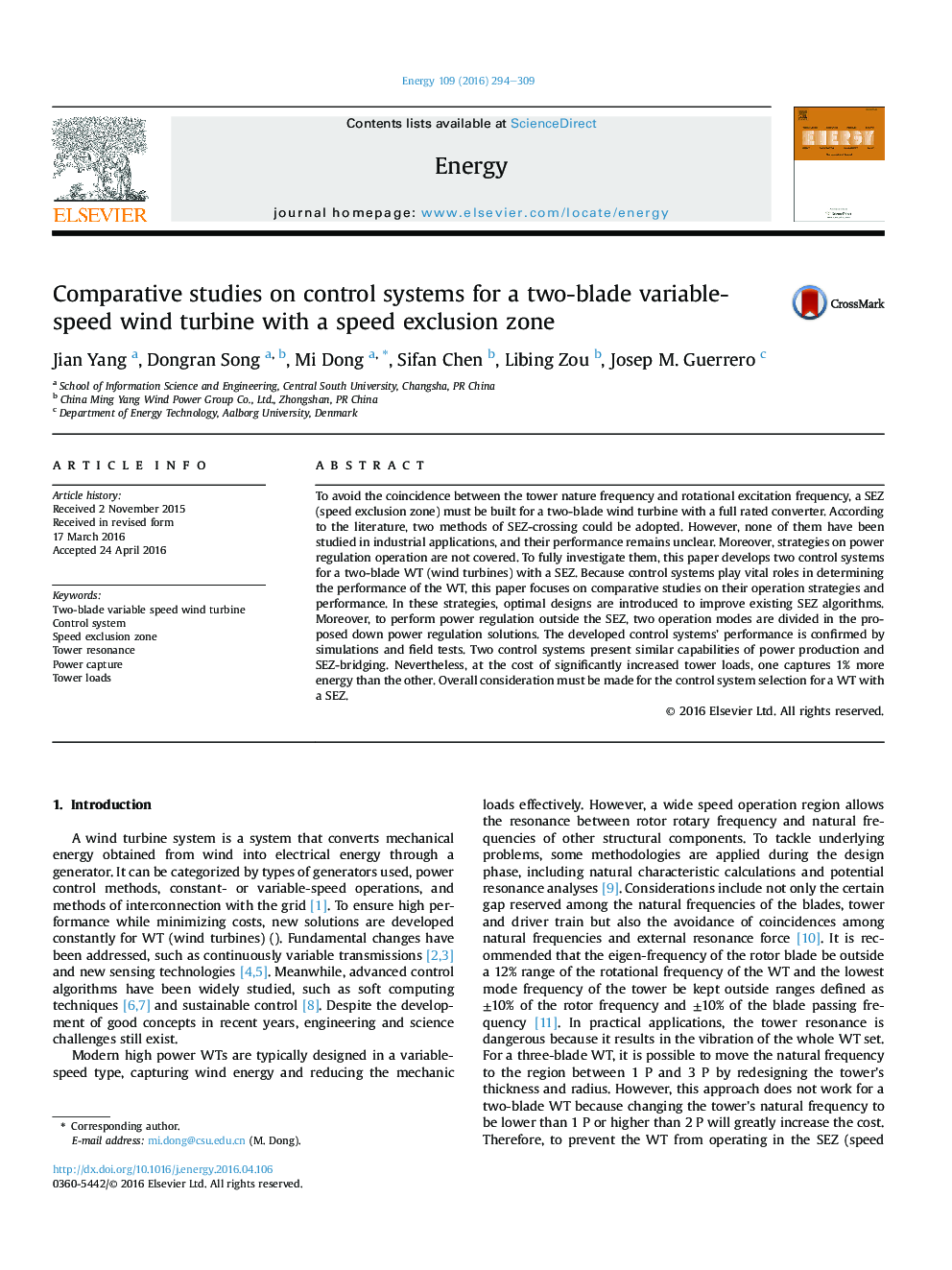| Article ID | Journal | Published Year | Pages | File Type |
|---|---|---|---|---|
| 8073466 | Energy | 2016 | 16 Pages |
Abstract
To avoid the coincidence between the tower nature frequency and rotational excitation frequency, a SEZ (speed exclusion zone) must be built for a two-blade wind turbine with a full rated converter. According to the literature, two methods of SEZ-crossing could be adopted. However, none of them have been studied in industrial applications, and their performance remains unclear. Moreover, strategies on power regulation operation are not covered. To fully investigate them, this paper develops two control systems for a two-blade WT (wind turbines) with a SEZ. Because control systems play vital roles in determining the performance of the WT, this paper focuses on comparative studies on their operation strategies and performance. In these strategies, optimal designs are introduced to improve existing SEZ algorithms. Moreover, to perform power regulation outside the SEZ, two operation modes are divided in the proposed down power regulation solutions. The developed control systems' performance is confirmed by simulations and field tests. Two control systems present similar capabilities of power production and SEZ-bridging. Nevertheless, at the cost of significantly increased tower loads, one captures 1% more energy than the other. Overall consideration must be made for the control system selection for a WT with a SEZ.
Keywords
Related Topics
Physical Sciences and Engineering
Energy
Energy (General)
Authors
Jian Yang, Dongran Song, Mi Dong, Sifan Chen, Libing Zou, Josep M. Guerrero,
